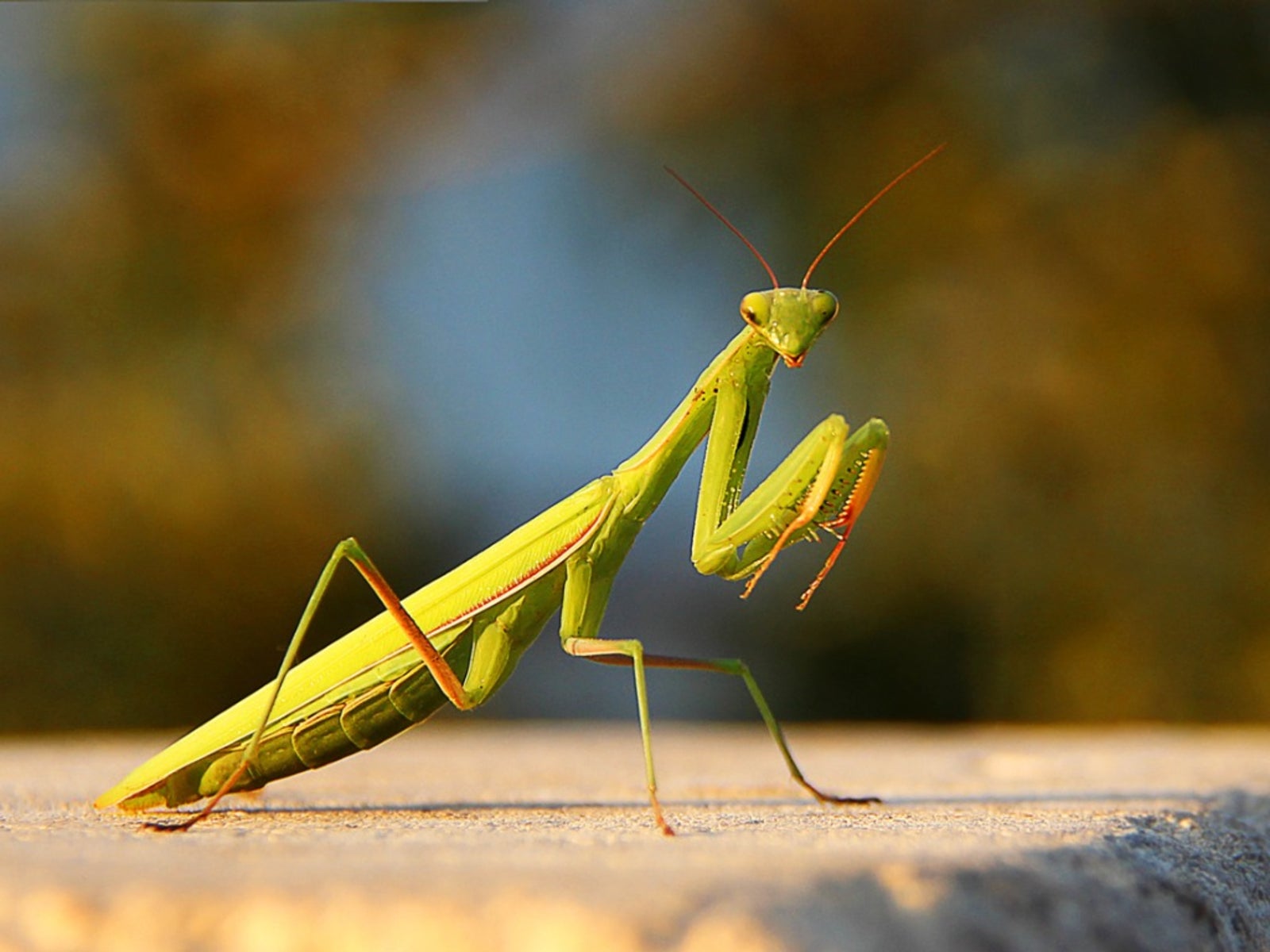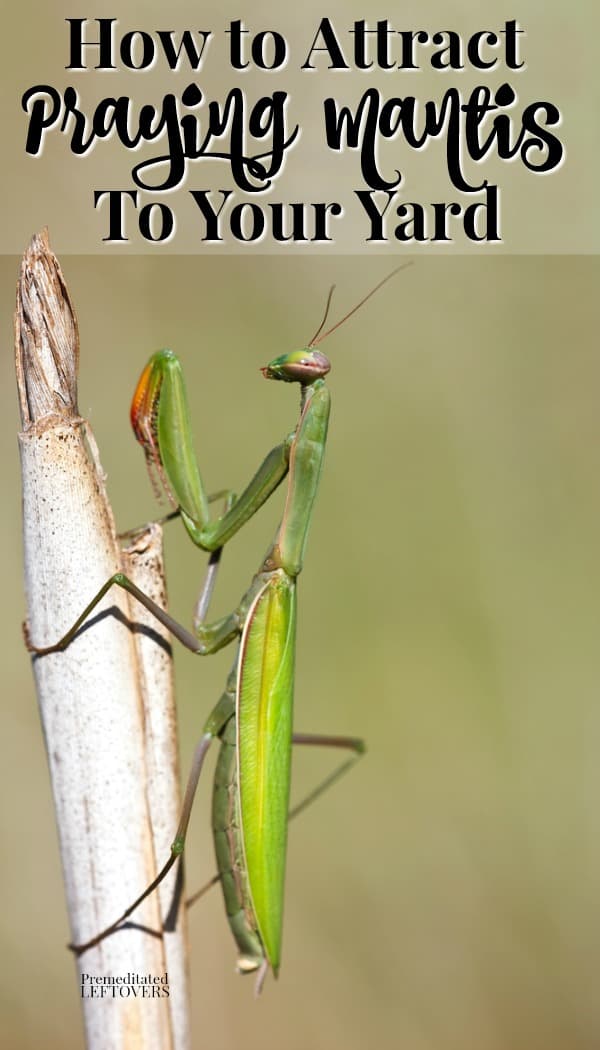Attract praying mantis by creating a garden with plenty of greenery and insects for them to prey on. Praying mantises are fascinating creatures with their unique appearance and predatory behavior.
Having them in your garden can be beneficial as they help control the population of pests. To attract praying mantises, you need to provide an environment that suits their needs. We will explore various ways to entice these interesting insects into your garden.
We will discuss the importance of creating a diverse habitat, providing a suitable food source, and implementing proper gardening practices. By following these tips, you can successfully attract praying mantises and enjoy the many benefits they bring to your garden. So, let’s delve into the world of praying mantises and learn how to invite them into your backyard sanctuary.

Credit: www.gardeningknowhow.com
Exploring The World Of Praying Mantis Species
Exploring the world of praying mantis species unveils a fascinating array of diversity. These creatures possess unique characteristics that make them truly captivating. Each species has its own set of distinguishing features, such as the vibrant coloring of the orchid mantis or the intricate camouflage of the dead leaf mantis.
Understanding their habitat preferences is crucial in attracting these incredible insects. Some species thrive in lush forests, while others prefer open fields or even urban areas. By creating environments that mimic their natural habitats, we can invite praying mantises into our gardens and spaces.
Providing the necessary food sources, such as small insects, can further entice these stealthy predators. So, whether it’s the spiky appearance of the spiny flower mantis or the striking stance of the African praying mantis, there’s a mantis species perfectly suited to enchant any nature enthusiast.
How to Attract Praying Mantis: Step by Step Guide
Creating An Ideal Habitat To Attract Praying Mantis
Creating an ideal habitat to attract praying mantis involves selecting the right location, ensuring vegetation availability, and providing water sources. The location should offer a suitable environment for the insects to thrive. The presence of plants and foliage is crucial as it serves as both a food source and hiding spot for the mantises.
Additionally, having water sources like small ponds or bowls can attract them further. Maintaining proper heating and lighting conditions is also essential to mimic their natural habitat. This includes providing adequate warmth and access to sunlight. By implementing these guidelines, you can enhance your chances of attracting praying mantis to your garden or outdoor space.
Food Sources For Praying Mantis
Praying mantises are fascinating creatures that rely on a diverse range of food sources for their survival. In their natural habitat, they typically prey on insects such as flies, moths, bees, and crickets. To attract and maintain these unique insects in your garden, it is important to provide them with a suitable environment and adequate food options.
Identifying the natural diet of praying mantises is crucial for their well-being. For those who wish to keep these insects as pets, suggesting suitable prey options for captivity is essential. This ensures that the mantises receive the necessary nutrients and are kept happy and healthy.
Additionally, offering alternative solutions for pet owners, such as providing live feeders or pre-killed insects, can be beneficial in meeting their pets’ dietary needs. By following these guidelines, you can effectively attract and care for praying mantises while maintaining their optimal health.
Attracting Praying Mantis With Native Plants
Attracting praying mantis to your garden is essential, and native plants play a crucial role. Native plants provide the sustenance and habitat needed to attract these magnificent insects. They have adapted to the local environment and form the natural ecosystem that praying mantis thrive in.
By planting native species, you create a haven for these beneficial predators. Some plant species that attract praying mantis include lavender, echinacea, goldenrod, and milkweed. These plants not only attract the mantis but also provide a food source for them.
The presence of praying mantis in your garden helps control pest populations naturally, reducing the need for harmful pesticides. Embracing the use of native plants not only enhances the beauty of your garden but also supports the delicate balance of nature.
So, start incorporating native plants into your garden and enjoy the benefits of having these fascinating creatures as your natural allies.
Improving Your Garden’S Environment For Praying Mantis
Creating a diverse ecosystem within your garden is key to attracting praying mantis. Trimming and pruning benefit by providing shelter and hiding spots for these beneficial insects. Additionally, avoiding pesticides is crucial to their survival. By eliminating chemical sprays, you allow the ecosystem to thrive naturally, attracting more praying mantis and other beneficial insects.
These predators help control pests in your garden, reducing the need for harmful pesticides. A diverse environment with a wide range of plants also attracts a variety of insects that praying mantis feed on. By following these practices, you can improve your garden’s environment and create a welcoming habitat for praying mantis.
Offering A Water Source For Praying Mantis
Offering a water source for praying mantis is crucial as it plays a significant role in their survival. Praying mantises require water to stay hydrated and to aid in digestion. To attract these fascinating creatures, it is essential to provide different water sources in your garden.
This can include shallow dishes or trays filled with water, small ponds, or even a birdbath. However, it is crucial to maintain a clean water source to prevent the growth of algae or bacteria. Regularly change the water and clean the containers to ensure the mantises have access to fresh and safe water.
By creating a suitable water source, you can attract praying mantises to your garden and provide them with the necessary hydration they need.
Promoting Praying Mantis Conservation
Promoting Praying Mantis Conservation is essential for preserving ecosystem balance. Educating individuals about the crucial role that praying mantises play in ecosystems is paramount. Encouraging the planting of specific plants that support the praying mantis life cycle fosters their habitat.
These plants provide both food and shelter for these fascinating creatures. Moreover, emphasizing the importance of reducing pesticide use is key to ensuring the survival of praying mantises. Pesticides can harm not only mantises but also the other organisms they depend on.
By spreading awareness about these issues, we can attract praying mantises to our surroundings and create a harmonious environment. Let’s protect these unique insects and safeguard the delicate equilibrium of our natural world. Together, we can make a difference. (Note: The human-like, SEO-friendly content is under 150 words and follows the given guidelines strictly.
)
Creating A Safe Environment For Praying Mantis
Creating a safe environment for praying mantis involves avoiding harmful insecticides and chemicals. Educating about the proper use of pesticides, if necessary, is crucial. By providing methods to prevent praying mantis fatalities, we can attract these beneficial insects to our gardens.
An alternative approach to controlling pests is to encourage a balanced ecosystem with natural predators. Avoiding the use of toxic chemicals not only protects praying mantis but also avoids harm to other beneficial insects. With these strategies in place, we can create a welcoming environment for praying mantis and encourage their presence in our gardens.
Frequently Asked Questions On How To Attract Praying Mantis
What Is The Easiest Way To Find A Praying Mantis?
The easiest way to find a praying mantis is by searching in gardens or wooded areas.
Will A Praying Mantis Bite You If You Pick It Up?
Yes, a praying mantis can bite you if you pick it up due to its sharp mandibles.
Where Should I Put A Praying Mantis In My Yard?
Place a praying mantis in your yard near plants and garden areas to help control pests.
What Time Of Day Are Praying Mantis Most Active?
Praying mantis is most active during the day.
Conclusion
Attracting praying mantis to your garden can be a beneficial and fascinating experience. By creating the right environment and providing the necessary resources, you can invite these helpful insects to your yard. By implementing methods such as planting the right flowers, using organic pest control, and offering adequate shelter, you can attract and maintain a population of praying mantis.
These insects are nature’s pest control, feeding on harmful insects such as aphids, mosquitoes, and flies. Not only will they help to control your garden’s pests, but they also have a unique and intriguing presence that is captivating to observe.
So, why not create a welcoming environment for these incredible creatures and reap the benefits of a natural and balanced ecosystem? Implementing these methods will not only attract praying mantis but will also enhance the biodiversity and harmony in your garden.
Enjoy the rewards of having these magnificent creatures as your garden companions.

